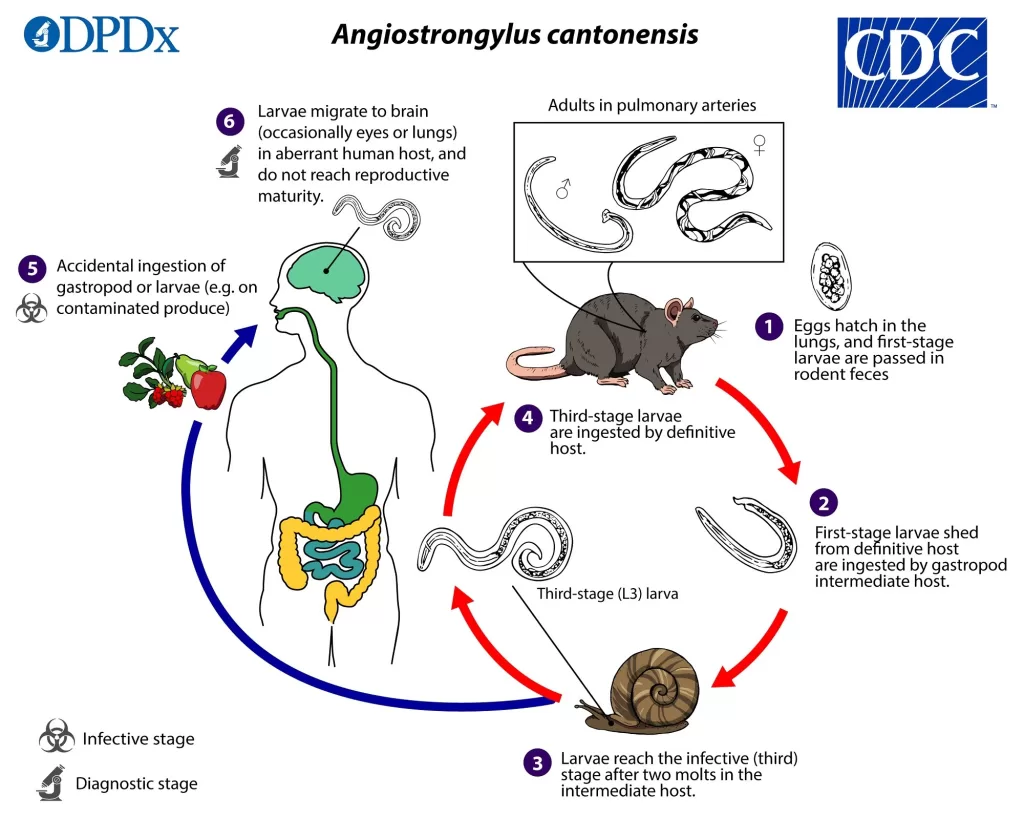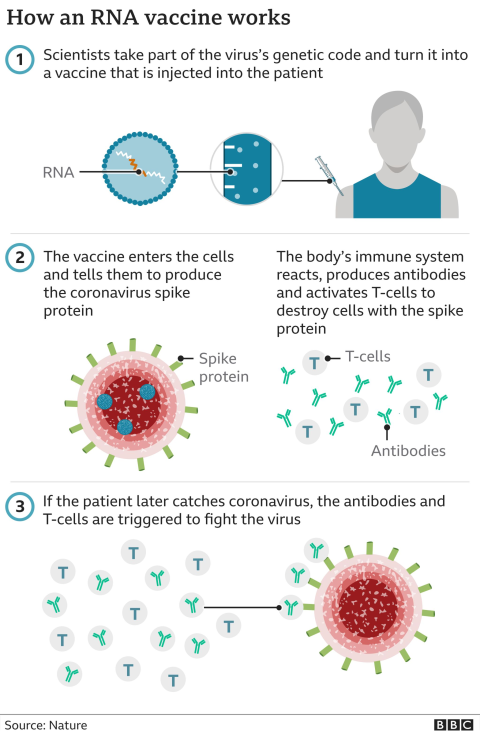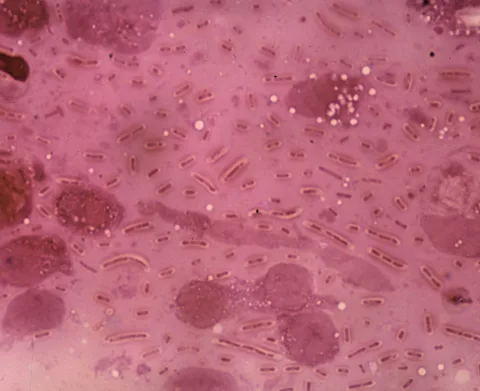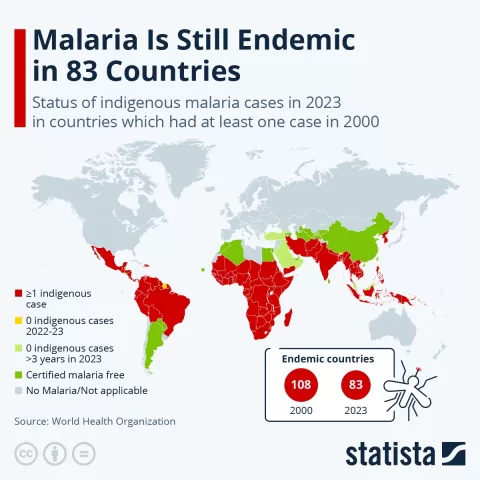Angiostrongylus cantonensis, commonly known as the rat lungworm, has emerged as a significant concern in urban areas, particularly Houston, Texas. This zoonotic nematode, primarily found in black rats, poses a serious risk to human health by leading to eosinophilic meningitis and other neurological complications. As rates of infection increase, researchers have discovered a 20% prevalence of this parasitic infection among Houston’s rat population, which underscores the urgent need for public awareness and preventive measures. Given its complex life cycle involving both rodents and gastropods, the transmission dynamics of Angiostrongylus cantonensis demand closer scrutiny, especially in metropolitan settings. Understanding the implications of this nematode infection is crucial as it highlights the intersection of wildlife health and human well-being in urban ecosystems.
The rat lungworm, scientifically referred to as Angiostrongylus cantonensis, is not just a concern for wildlife; it also represents a growing public health issue. This parasitic nematode is primarily transmitted through infected mollusks, impacting not only populations of Houston Texas rats but also putting humans at risk for debilitating diseases. The condition is characterized by symptoms associated with eosinophilic meningitis, a severe condition that can arise from exposure to this zoonotic parasite. As urban wildlife habitats expand, understanding the epidemiology of such nematode infections becomes increasingly vital. By exploring alternative hosts and transmission pathways, we can better grasp the challenges posed by Angiostrongylus cantonensis and develop effective strategies for prevention.
Understanding Angiostrongylus cantonensis and Its Impact
Angiostrongylus cantonensis, commonly known as the rat lungworm, is a parasitic nematode that poses significant health risks to both humans and various animal species. Its lifecycle is primarily linked to rodents, especially the black rat (Rattus rattus), which serves as a definitive host. The transmission to humans typically occurs when infected gastropods, such as snails and slugs, are ingested, leading to serious conditions like eosinophilic meningitis. The increasing prevalence of A. cantonensis infections in urban areas, particularly in Houston, Texas, underscores the importance of understanding its epidemiology and potential zoonotic risks presented by Houston’s rat population.
Through studies conducted at local facilities, researchers have identified a notable rate of infection in black rats, suggesting that these urban environments can provide a conducive habitat for the rat lungworm. Public health initiatives must focus on educating communities about the risks associated with zoonotic diseases like those caused by A. cantonensis, particularly in regions where the presence of infected rodents has been confirmed.
The recent findings of a 20% prevalence of A. cantonensis in black rats at a Houston zoo highlight the urgent need for comprehensive surveillance in rodent populations. This research not only highlights the endemic nature of the rat lungworm in Texas but also correlates with historical records of its presence in neighboring states such as Florida and Louisiana. The emergence of cases linked to eosinophilic meningitis among residents emphasizes the potential health crisis if left unchecked. Prioritizing ongoing research and public awareness can help mitigate the impacts of this zoonotic nematode.
The Zoonotic Risks Associated with Rat Lungworm Infections
Zoonotic diseases, caused by pathogens that are transmitted from animals to humans, pose significant public health challenges worldwide, and Angiostrongylus cantonensis is no exception. Infected rodents can carry this nematode, shedding larvae into the environment, which can then be ingested by unsuspecting humans through contaminated food or water sources. As urbanization continues to expand, the likelihood of human encounters with these infectious agents increases. In Houston, Texas, where rat populations are on the rise, public health officials must remain vigilant against the potential outbreak of eosinophilic meningitis as a consequence of this nematode infection.
The significance of monitoring zoonotic diseases lies not only in addressing human health concerns but also in safeguarding wildlife, especially those in proximity to urban zoos. For instance, the presence of A. cantonensis within black rat populations poses a dual risk—both to human residents and to endangered species housed within the zoo facilities. Such an intersectionality calls for integrated approaches to disease control, emphasizing the need for surveillance and early intervention strategies to tackle rat lungworm infections effectively.
Preventive measures for controlling echinococcosis and other zoonotic diseases should also focus on the environmental factors that contribute to the spread of A. cantonensis among wildlife. Factors such as increased urban rodent populations, litter accumulation, and improper waste management can exacerbate the problem, leading to heightened risk for nearby human populations. Addressing these root causes through community engagement and public health campaigns can prove essential in reducing the incidence of rat lungworm infection within urban areas, especially in cities like Houston, where the natural habitat of both rodents and gastropods overlap with human populations.
Eosinophilic Meningitis: Symptoms, Diagnosis, and Treatment
Eosinophilic meningitis is a severe condition that can result from the migration of Angiostrongylus cantonensis larvae within the central nervous system. Patients afflicted with eosinophilic meningitis typically present with symptoms such as headaches, fever, visual disturbances, and neurological deficits. The diagnosis often requires a combination of clinical evaluation and laboratory testing, including the analysis of cerebrospinal fluid (CSF) which typically shows a predominance of eosinophils. Effective treatment usually focuses on managing symptoms and may involve corticosteroids to reduce inflammation and alleviate neurological symptoms.
In diagnosing eosinophilic meningitis, clinicians must consider recent travel to endemic areas or exposure to potential sources of infection, such as contaminated food or freshwater environments. Particularly in regions like Houston, where A. cantonensis has been documented, increased awareness among healthcare providers about the clinical manifestations of this nematode infection can lead to quicker diagnoses and more timely treatment interventions. Ongoing surveillance and research play critical roles in understanding the progression and presentation of eosinophilic meningitis in those affected by rat lungworm, highlighting its danger as a zoonotic disease.
The Life Cycle of Angiostrongylus cantonensis: A Zoonotic Perspective
The life cycle of Angiostrongylus cantonensis involves several hosts, primarily rodents and gastropods, forming a complex and intricate relationship that facilitates its transmission as a zoonotic pathogen. Adult worms reside in the pulmonary arteries of rats, where they produce larvae that are excreted in rat feces. These larvae are then consumed by gastropods, leading to the continuation of the parasite’s life cycle. This indirect transmission path emphasizes the role of the urban ecosystem in harboring and disseminating the rat lungworm, especially in metropolitan areas like Houston, Texas, where the interaction between wildlife and humans is prevalent.
Understanding the life cycle of A. cantonensis is crucial for the development of effective control measures and public health strategies. Public health officials need to educate communities about proper waste disposal and the risks associated with consuming undercooked snails or contaminated water sources. Increased knowledge and awareness can help prevent outbreaks of eosinophilic meningitis, stemming from rat lungworm exposures and ultimately mitigating the zoonotic risks associated with this nematode infection.
The Role of Houston’s Urban Ecology in the Transmission of Rat Lungworm
Houston’s urban ecology significantly contributes to the transmission dynamics of Angiostrongylus cantonensis, largely due to the presence of abundant rodent populations, particularly black rats. The city’s climate and geography provide ideal conditions for both rats and gastropods, facilitating their interactions and enabling the rat lungworm to thrive. With numerous parks, gardens, and moist environments available, Houston serves as a hotspot for rat lungworm transmission among wildlife and potentially towards humans, necessitating a focused approach to ecological management and public education regarding zoonotic diseases and their vectors.
Efforts to mitigate the spread of A. cantonensis in Houston should integrate wildlife management practices, community outreach programs, and environmental cleanliness initiatives. By reducing rat habitats, managing waste properly, and educating the public about avoiding potentially contaminated food and water, the risk of eosinophilic meningitis can be significantly lowered. Collaboration between public health officials, ecologists, and local communities can foster a safer environment, ultimately lowering the emergence of zoonotic infections like those related to Angiostrongylus cantonensis.
Preventive Strategies Against Angiostrongylus cantonensis Infections
Preventive strategies against Angiostrongylus cantonensis infections must encompass multiple approaches, including public education, environmental management, and systematic monitoring of rodent populations in urban settings. Increasing community awareness about the risks associated with rat lungworm is paramount; individuals should be informed about how to safely handle food and avoid potential sources of gastropod-related infections, particularly in areas where rat populations are known to be high. Public health campaigns should target vulnerable populations and engage local communities in understanding the implications of zoonotic diseases.
In addition to educational measures, local authorities should prioritize rodent control strategies, which may include community-based interventions to limit food sources for rats and enhance waste management protocols. Establishing a surveillance program to monitor sporadic cases of eosinophilic meningitis linked to A. cantonensis can also provide invaluable data for assessing the effectiveness of these preventive measures. The collaboration between public health officials and environmental services can significantly mitigate the risk of nematode transmission within urban landscapes such as Houston, Texas.
Research Directions on Zoonotic Diseases in Texas
Ongoing research efforts into zoonotic diseases like Angiostrongylus cantonensis are critical to understanding their ecology, epidemiology, and potential public health impact within specific regions like Texas. Investigating the distribution of rat lungworm and its infection rates among urban rodent populations can offer insights into effective control measures and inform public health policies. Furthermore, interdisciplinary studies that involve ecologists, veterinarians, and public health experts can bridge the knowledge gap that currently exists regarding the interactions between humans, animals, and environmental factors contributing to the spread of zoonotic diseases.
As Houston continues to grow and urbanize, additional research directions should focus on identifying potential reservoirs and transmission pathways of zoonotic pathogens among other wildlife species. Emphasizing collaborative efforts among local universities and research institutions to conduct comprehensive ecological assessments will help enhance awareness and preparedness against diseases like eosinophilic meningitis, ultimately contributing to healthier urban environments. Ensuring that ongoing monitoring and assessment are integrated within public health frameworks can instigate positive changes in managing zoonotic risks associated with Angiostrongylus cantonensis.
The Importance of Community Engagement in Zoonotic Disease Prevention
Engaging communities in the conversation around zoonotic diseases like Angiostrongylus cantonensis is essential for fostering a resilient public health response. Community engagement can raise awareness about the risks associated with rat lungworm and encourage proactive behavior toward maintaining hygiene and sanitation practices in urban environments. By involving residents in educational programs and local discussions, public health authorities can empower individuals to take ownership of their health and the health of those around them, particularly in areas where zoonotic diseases pose a threat.
Partnerships with local organizations, schools, and community leaders can amplify the message regarding prevention strategies against nematode infections. Hosting workshops, distributing informational materials, and utilizing social media platforms are effective methods for communicating with diverse populations. Through collective effort and public participation, communities can work toward reducing the prevalence of zoonotic diseases, thereby enhancing the overall health and safety of their environments while simultaneously addressing the challenges posed by urban wildlife populations.
Future Directions in Research on Rat Lungworm and Its Zoonotic Risks
Future research on Angiostrongylus cantonensis should focus on filling the gaps in knowledge surrounding its biology, ecology, and potential zoonotic risks in urban environments like Houston, Texas. Investigating the various transmission pathways, including alternative hosts and environmental factors influencing the worm’s lifecycle, can provide deeper insights into controlling outbreaks of eosinophilic meningitis. Emphasizing molecular approaches to monitor changes in the prevalence and distribution of the rat lungworm across different geographical locations will also enhance our understanding of its spread and inform risk assessments.
Furthermore, collaborations between researchers in veterinary parasitology, public health, and urban ecology can foster a multidisciplinary approach to tackling zoonotic threats. By sharing findings from studies conducted in other regions and adapting those strategies to local contexts, the risk posed by Angiostrongylus cantonensis can be addressed more effectively. Ultimately, sustaining a commitment to ongoing research will be pivotal in ensuring both human and animal health are safeguarded against the complexities of zoonotic diseases in rapidly evolving urban landscapes.
Frequently Asked Questions
What is Angiostrongylus cantonensis and how does it relate to zoonotic diseases?
Angiostrongylus cantonensis, commonly known as the rat lungworm, is a parasitic nematode responsible for zoonotic diseases in humans, particularly eosinophilic meningitis. It primarily infects rats, where it completes its life cycle, but humans can accidentally become infected through consuming contaminated food or water, leading to severe neurological conditions.
How prevalent is Angiostrongylus cantonensis in black rats in Houston, Texas?
Recent research identified a 20% prevalence of Angiostrongylus cantonensis among black rats in Houston, Texas, indicating a significant zoonotic risk. This study highlights the local presence of rat lungworm and emphasizes the need for awareness and further research in metropolitan areas.
What are the symptoms of eosinophilic meningitis caused by Angiostrongylus cantonensis?
Eosinophilic meningitis, which can result from Angiostrongylus cantonensis infection, is characterized by severe headaches, neck stiffness, fever, and neurological symptoms. It occurs when the larvae migrate through the central nervous system, leading to inflammation and damage.
Can Houston Texas rats be a source of Angiostrongylus cantonensis infections in humans?
Yes, Houston Texas rats, particularly black rats, can serve as reservoirs for Angiostrongylus cantonensis. The larvae can contaminate the environment, and accidental ingestion of infected food or water can lead to human infections, making urban rodent populations a public health concern.
What research methods were used to study Angiostrongylus cantonensis in Houston rats?
The study employed necropsies and molecular testing on 75 black rats collected from a zoo in Houston, Texas. Histopathological evaluations provided insights into the severity of infections, confirming the prevalence of Angiostrongylus cantonensis and establishing its presence in the local rodent population.
What other species are affected by Angiostrongylus cantonensis besides humans?
In addition to humans, Angiostrongylus cantonensis can infect various mammals, particularly nonhuman primates, leading to similar neurological conditions. The presence of the parasite in zoo animals poses a risk to endangered species and highlights the need for comprehensive monitoring.
How can urban populations reduce the risk of Angiostrongylus cantonensis transmission?
To reduce the risk of Angiostrongylus cantonensis transmission, urban populations should avoid consuming raw or undercooked snails and slugs, maintain cleanliness in food storage, and manage rat populations effectively through sanitation and pest control measures.
What immediate actions are recommended in response to Angiostrongylus cantonensis findings in Houston?
Immediate actions include conducting statewide assessments of rodent populations for Angiostrongylus cantonensis, raising public awareness about the risks, and implementing control measures to mitigate the zoonotic threat posed by this parasite in urban areas.
| Key Points |
|---|
| Angiostrongylus cantonensis is a zoonotic nematode found in black rats, linked to significant health risks in humans and wildlife. |
| The study found a 20% infection rate among black rats at a Houston zoo, suggesting a notable presence of the parasite in urban areas. |
| Infection leads to severe symptoms such as eosinophilic meningitis and meningoencephalitis in humans. |
| Research indicates a distribution of A. cantonensis in the Southeastern United States, necessitating broader assessments. |
| Histological evaluations confirmed significant lung and neurological symptoms associated with the parasite’s presence. |
| The study emphasizes the importance of identifying urban rodent populations and impacts on endangered species. |
| Immediate statewide assessments and control measures are recommended to address this zoonotic health threat. |
Summary
Angiostrongylus cantonensis is a significant zoonotic threat found in urban black rat populations, particularly in Houston, Texas. This study highlights a concerning prevalence of infection in these rodents, posing serious health risks not only to humans, who can experience severe neurological disorders, but also to endangered wildlife within urban environments. The findings underscore the necessity for urgent research and control measures to mitigate this emerging health issue, warranting increased awareness in both public health and conservation efforts.
The content provided on this blog (e.g., symptom descriptions, health tips, or general advice) is for informational purposes only and is not a substitute for professional medical advice, diagnosis, or treatment. Always seek the guidance of your physician or other qualified healthcare provider with any questions you may have regarding a medical condition. Never disregard professional medical advice or delay seeking it because of something you have read on this website. If you believe you may have a medical emergency, call your doctor or emergency services immediately. Reliance on any information provided by this blog is solely at your own risk.








